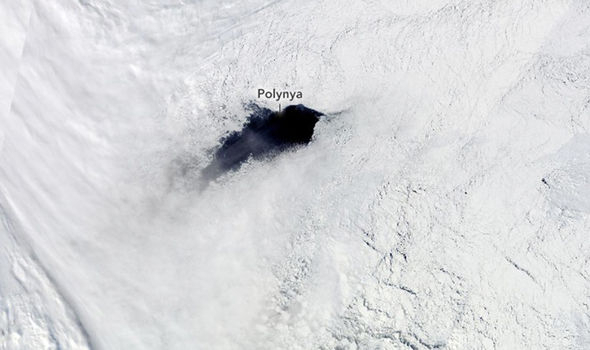Mysteries related to earth always trigger queries and excitement among the scientists. This time an anomaly in Antarctica's Weddell Polynya stunned scientists from US space agency, NASA after they noticed a giant hole, measuring over 20,000 square miles.
Weddell Polynya or Weddell Sea Polynya
Weddell Polynya is an irregular area of open water surrounded by sea ice in the Weddell Sea of the Southern Ocean off Antarctica and near the Maud Rise. Polynyas are areas of the unfrozen sea within the ice pack and in this case, it formed in the ice to the east of the Antarctic Peninsula. It should be noted that this ice is actually sea ice but also contains icebergs produced from the peripheral glaciers.
As per the early evidence, this anomaly appeared every winter between 1974 and 76 before disappearing into solid ice. But again, after almost a decade later NASA scientists from Earth Observatory detected the same phenomenon. Satellite images showed that the polynya is larger than the size of the Netherlands and its formation is usually caused by sensible or latent heat processes.

Explanation of the anomaly
As per a science-based YouTube channel Tech Insider, the giant scientists were not sure how the giant mysterious hole appeared. It stated in their video that this Weddell Polynya was found located hundreds of kilometres from the coast.
While explaining, the experts said in the same video that NASA satellites spotted a small opening in the first sighting in over 40 years in 2016 and since then it continued to increase in the size but the reappearance almost after a decade is still considered a mystery.
Now scientists believe that the reason behind its reappearance is most likely due to climate change. Recently it was also found that the intense cyclones occurring over the ice pack were at the origin of the re-occurrence of the Weddell Polynya in austral winter of 2017.
Climate change effect on Antarctica
It should be noted that Arctic and Atlantic are too different. While in the Arctic, almost all the ice floats on water and includes a very little area of land, Antarctica has a massive landmass which is covered by ice formed from snowfall, some floating ice around the perimeter of the land, but the vast majority of Antarctic ice is on land.

As per the scientists when floating ice melts it doesn't affect the sea level as the ice was already floating in the water, but when land ice melts, the liquid water flows into the ocean and causes the water levels to rise.
As mentioned by Discovering Antarctica, "Upper ocean temperatures to the west of the Antarctic Peninsula have increased over 1°C since 1955. It has now been established that the Antarctic Circumpolar Current is warming more rapidly than the global ocean as a whole."









